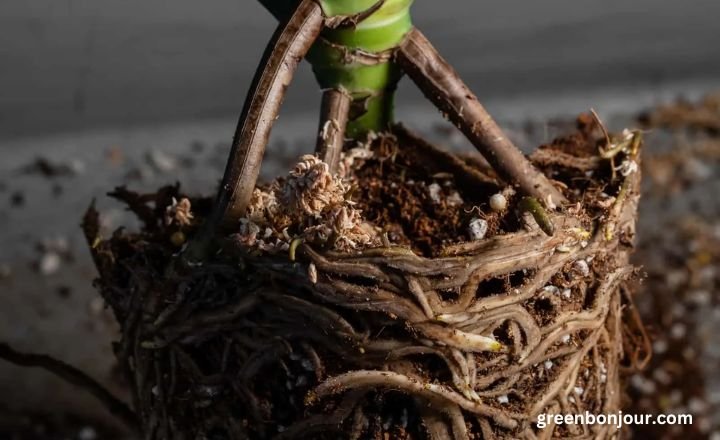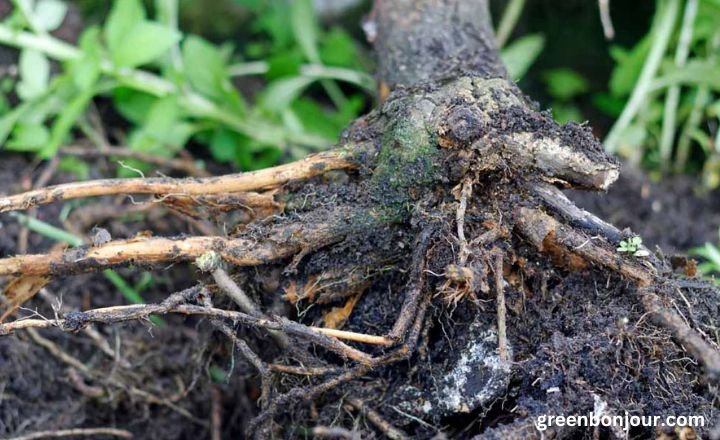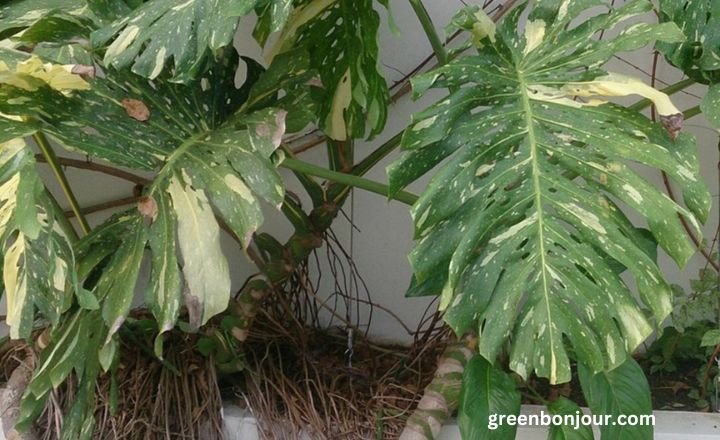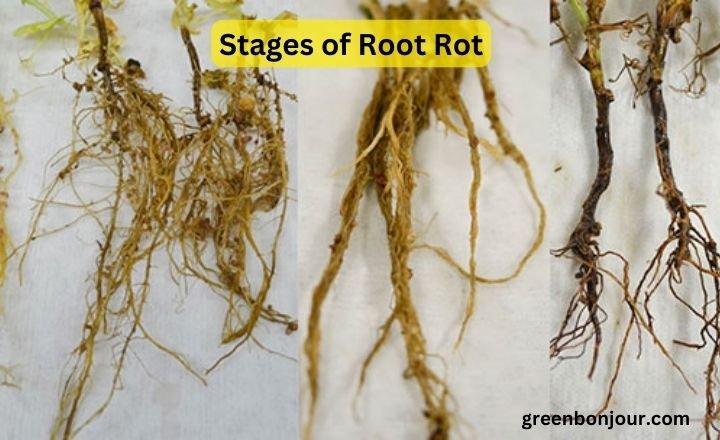This is an indoor plant that requires a lot of care and attention for its growth. If you are one of its lovers then you must be aware of the problem named Monstera Root Rot, which are common among them. Monstera plants are known for their beauty.
This problem can be caused by some factors such as fungus attacks, etc. They also show some signs when they are caught by the root rot monstera. Such signs include a foul smell from the roots, spots on leaves, brown roots, etc. But this problem can be treated that you need to know.
Most Common Reason For Rotting Of The Monstera Roots
You can say that the most common reason behind the root rot monstera is overwatering. If you are the man of this field then you must know the fact that overwatering is famous for causing this problem. You do so unconsciously, means that you are unaware of the fact that you are overwatering your plant.
You might think that you are taking care of your plant, but remember excess of everything is bad. Overwatering makes the soil damp which makes plants unable to breathe. When Monstera air root does not get the air circulation properly this can cause the death of the plant.
This problem can easily be treated by changing the pot of the plant. You can also provide your plant with well-drained soil this will help you in treating this issue. You also need to take care of the watering schedule. So in short, this plant needs your time and and deep attention.

You need some precautions if you are growing a new Monstera plant, you need to use proper fungicides and should give a well-drainage system. Root rotting can happen if the plant is getting too low temperature, or your plant is not receiving enough sunlight.
These factors can also have an impact on the growth of the plant and result in the rotting of the roots. Even if you over-fertilize your plant the end reward you will receive is rotted roots.
Monstera Root Rot Signs, Causes, and Treatment
It is not an easy task to identify the monstera root rot but you can have some causes, treatments, and signs to deal with it.
Foul Smell Coming From The Roots
This problem can be detected by the foul smell. In this process, you need to smell the plant if you notice some kind of smell, you can have an idea of root rotting. In case you fail to detect the smell then it’s possible that the infection can spread to leaves and stems, which can cause the ultimate death of the plant.

But you can treat this problem by trimming the rotten parts, giving it fresh soil, and many other ways. These are easy ways to get rid of this problem.
Spots on leaves
The root rotting can be identified by the black spot on the leaves. The black spots are surrounded by a yellow hue. This is caused because of bacterial and pathogens attacks which destroy the plant.
This indicates that the plant is in trouble and you need to help your plant. This can be due to overwatering too. However, you can cure this issue by cutting the affected part of the plant.
Mushy or Brown-Looking Roots
You can identify the roots by digging deep into your pot, when you notice the mushy roots in it it is a sign that your plant is troubling and you have to deal with this problem. If the smell is so bad, that it feels like forgotten gym socks and feels mushy, then it’s time to make your plant free from this smell. This indicates that you are on the road to recovery.

Soggy Soil
When you feel that the soil is unusually soggy than normal, then you need to change the soil of the pot because it is destroying your plant. You have also to pay attention to the watering schedule. Because water is the main cause of this sign. Water makes the soil soggy which is not good for the growth of the plant.
Fungus Gnats
Fungus Gnats are another cause of root rotting. They are annoying and unwanted guests that are able to destroy your plant. You have to get rid of them and have to save your plant. Their presence is a sign that your soil is getting more wetland than a comfy home. This should be avoided because this is not good for plants’ health.

Stages Of Root Rot In Monstera Plant
The root rotting can be divided into three stages:
The Primary Stage
This is the initial step and can be considered as the initial stage of root rotting. In this stage, you will observe that the leaves of the plant are getting discolored and are getting curled.
You will also see that the growth of the plant has stopped or become slower than usual. These are the clear signs for you to know that the roots of your monstera will start to rot.
The Secondary Stage
After the primary stage, here comes the secondary stage that can be cured. All you have to do is to identify the problem in the primary stage. You will notice some changes in the plants like black spots and foul smell, etc.
Here what you have to do is to notice all these indications and have to be careful and take care of your plant, just to prevent the root rot.
The Final Stage
The final is considered to be the most crucial stage because it is the nonrepairable stage of the root rotting process. You need to take rapid action in this situation. You need to cut the diseased part of the plant. This will work for you and your plant’s growth as well.

Treatment For Root Rotting In The Monstera Plant
There are some ways available you can follow to treat the root rot. These methods are easy to use and can be used by all.
Rinse the roots
In this method, you need to take your monstera out of the pot. After that, you will be able to see the soil around the roots. Try to remove that soil slowly and carefully as well.
Once you have done this, you have to take it and wash it gently under the running water. This is an easy method that can be done by everyone.
Remove the damaged roots
To use this method, you will require a sharp scissor first. Always remember to sterilize them before using them on the roots. After washing the roots properly as you already have done in the previous method, take your plant carefully. Now what you have to do is observe the brown and mushy roots, these roots are the true reason behind the contamination, so remove them all.

Let the plant dry
When you successfully remove the affected roots, take your plant in the open air and let it dry. There is a simple reason for this step, You need to introduce your roots to a lot of moisture for a while and now they need to be dried. It is a time-consuming process so, It can take up to 2 hours to dry them completely.
Plant the monstera into a new pot
Once you have done all the previous steps, the next step is to plant this plant in a new pot. This can be tricky but you have to do this to save your plant.
If you are going to use the old pot then make sure it’s completely clean. Also, you need to make sure that before planting the plant you have to remove all the old parts of the plant because the remaining parts can damage the new one.
When you plant the plant in the new pot, add the soil from the sides. Apply a little pressure on the top of the soil and fix it. You can also use pebbles with soil but do not use excessive amounts of pebbles as they will block the drainage hole.
Conclusion
Monstera plants are known for their beauty and they enhance the beauty of the garden. If you are one of its lovers then you must be aware of the problem named Monstera Root Rot, which is considered to be the common problem for them.
This problem can be caused by some factors such as fungus attacks, etc. They also show some signs when they are caught by the root rot monstera. Such signs include a foul smell from the roots, spots on leaves, brown roots, etc.
FAQs
How do you treat Monstera fungus?
Apply an antifungal as a foliar spray to treat any sports on the leaves surfaces as well as the soil drench to treat the soil as the contagion is actually soil born.
How do you fix root rot in Monstera?
Promote root recovery by repotting the plant and adjusting your watering schedule. It’s like putting your plant on bed rest and making sure it stays hydrated.
Should I cut aerial roots Monstera?
It’s absolutely fine to trim these roots off close to the stem; just make sure you use sterilized, sharp shears to prevent the risk of spreading disease.
What is the difference between monstera aerial roots and the roots of monstera?
Aerial roots in Monstera are thin, wiry structures that emerge from the plant’s nodes. Unlike the typical roots that dig deep into the soil, aerial roots tend to dangle and seek.